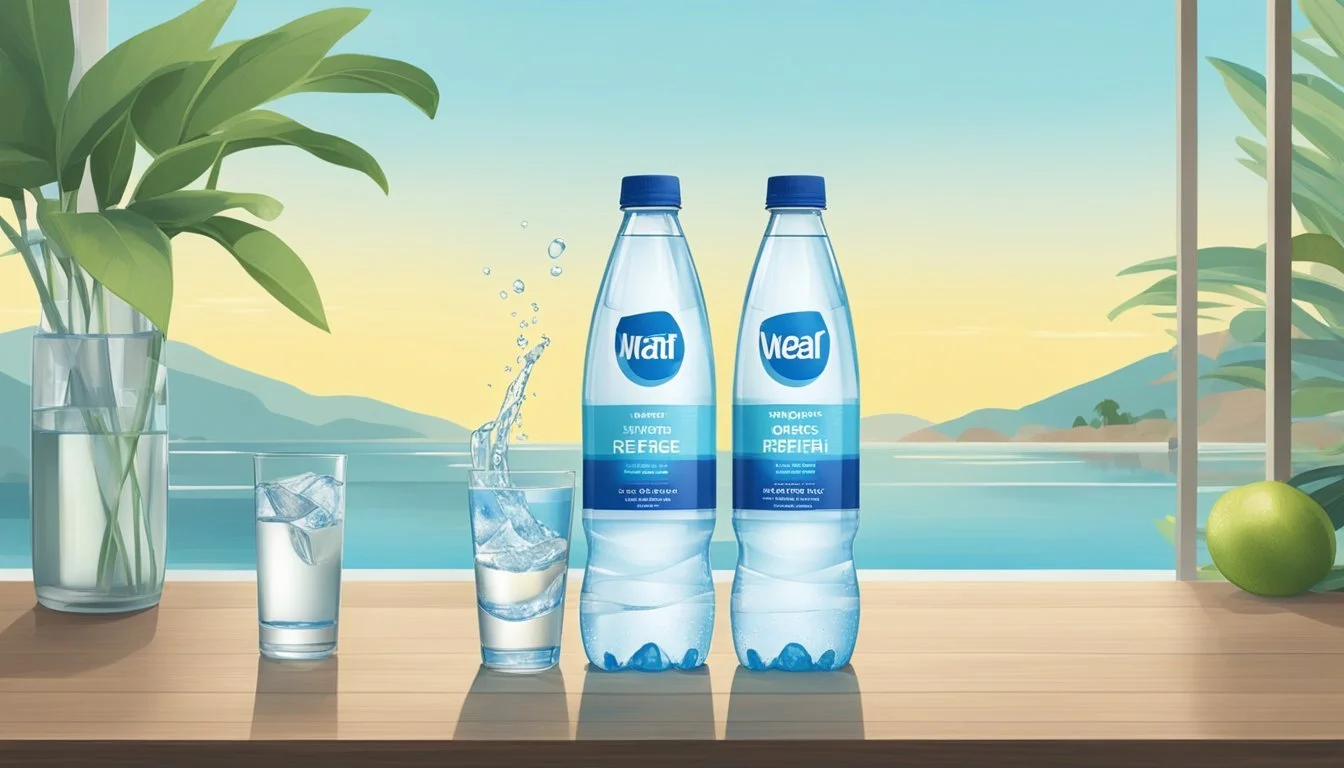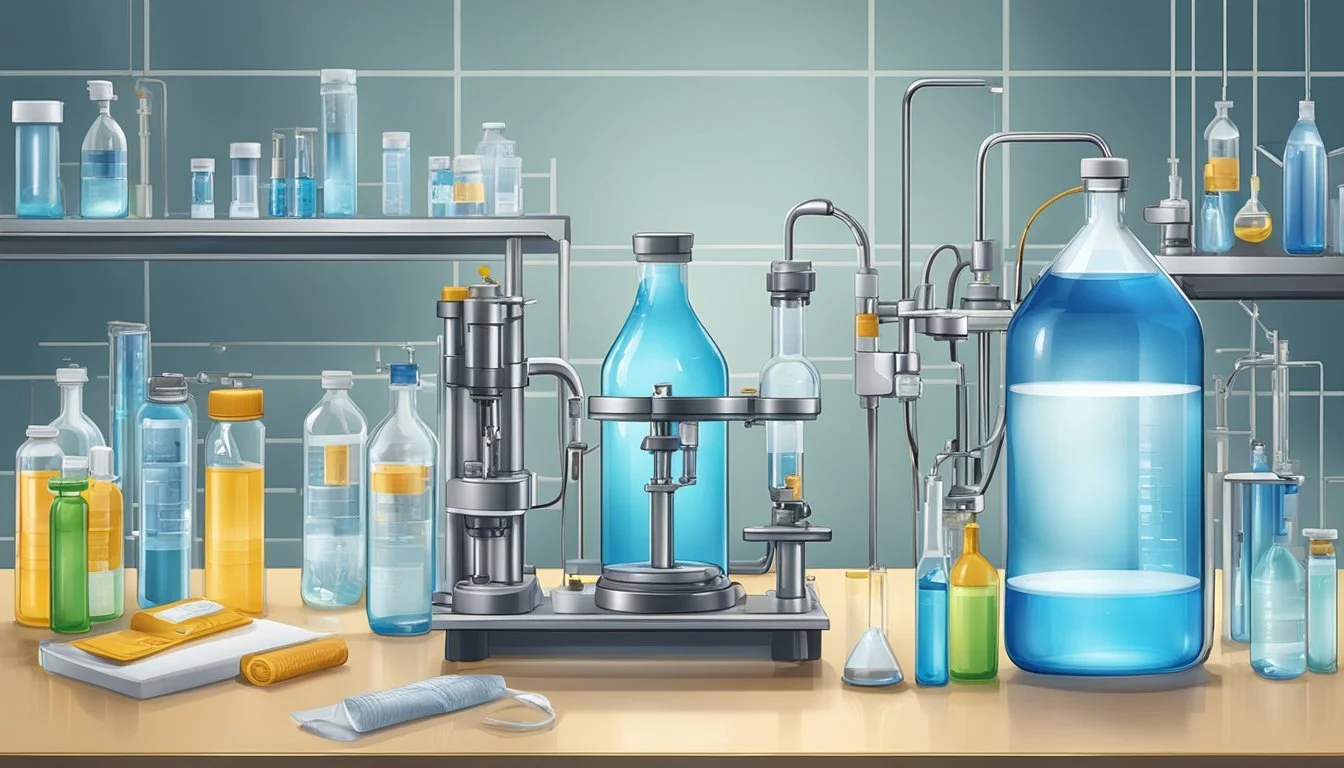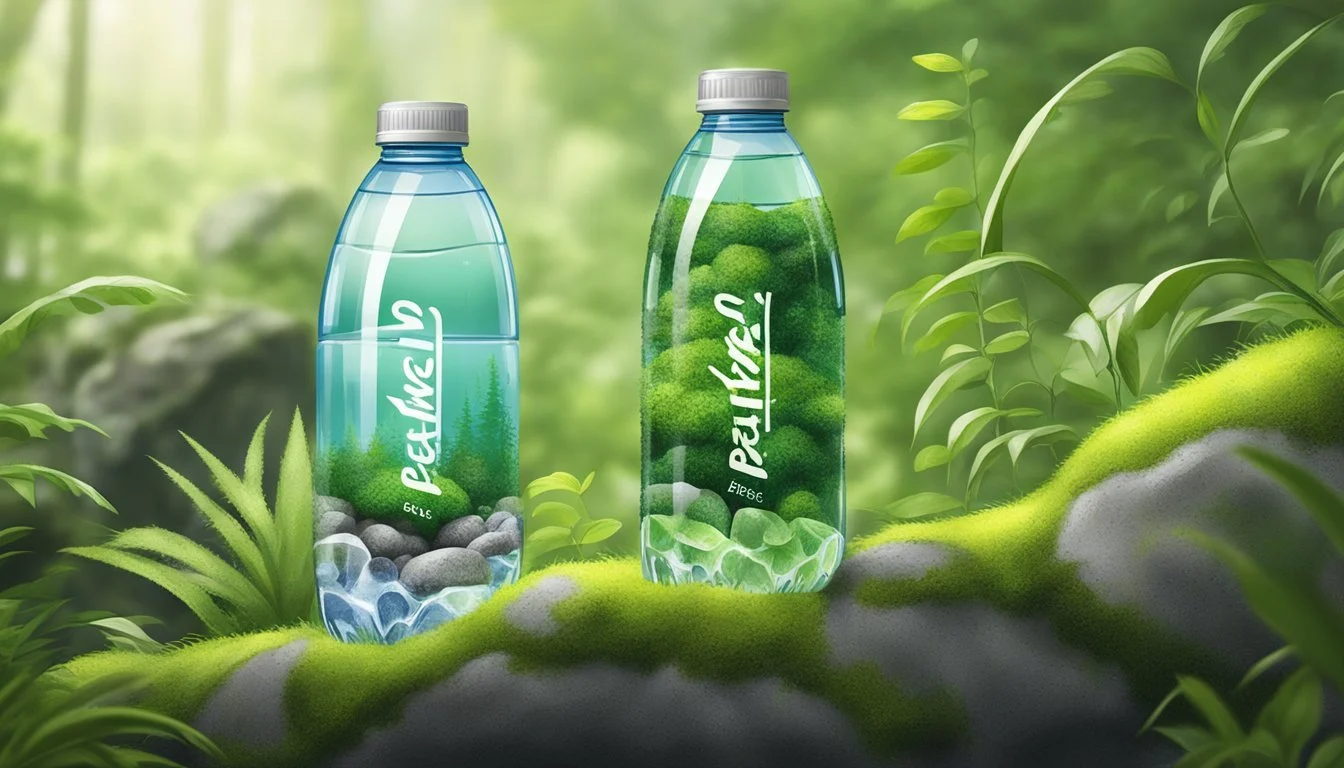Smartwater vs. Refreshe
Which Bottled Water is Better for You?
Choosing between Smartwater and Refreshe can be a tough decision for anyone navigating the crowded market of bottled water. Smartwater, known for its vapor distillation process, boasts a clean and pure taste by removing impurities. Refreshe, on the other hand, might not have the same innovative purification, but it often comes at a more affordable price without compromising on basic hydration needs.
For those prioritizing the purity and sophistication of their hydration, Smartwater holds a clear edge with its highly regarded taste and added electrolytes. It aims to enhance not just the flavor but also the experience of drinking water, setting it apart from many other brands.
Refreshe serves as a reliable option for those seeking a budget-friendly choice that satisfies everyday hydration necessities. While it may not undergo the same rigorous distillation as Smartwater, it fulfills the essential purpose of bottled water at a lower cost, making it a practical choice for many consumers.
Product Overview
Smartwater and Refreshe offer distinct qualities through their brand histories and production processes, providing a variety of water types to cater to different consumer preferences.
Brand Origin and History
Smartwater was introduced by Glaceau, a subsidiary of Coca-Cola, in 1996. Known for its vapor-distilled purification process, the brand quickly gained popularity. Smartwater emphasizes its clean, crisp taste achieved through this advanced distillation technique.
Refreshe, on the other hand, is a product line under Safeway Inc., which is now part of Albertsons Companies. Refreshe focuses on delivering affordable, high-quality purified water, often obtaining its water from municipal sources and subjecting it to rigorous purification methods.
Both brands have carved out substantial market shares by aligning with their parent companies' reputations and expanding their product lines to meet diverse consumer demands.
Production Process
Smartwater is produced using a vapor-distillation process, where water is first turned into vapor to remove impurities and then condensed back into liquid form. Electrolytes such as potassium, calcium, and magnesium are added to enhance taste. This meticulous process ensures a high purity level and a distinctive, refreshing taste.
Refreshe employs multiple purification methods depending on the type of water. The primary process includes reverse osmosis, which effectively filters out contaminants. Some Refreshe products are also derived from spring or artesian water sources, undergoing minimal processing to maintain natural minerals.
Smartwater and Refreshe both prioritize thorough purification to deliver clean drinking water, though they utilize different methods to achieve this aim.
Types of Bottled Water
Smartwater primarily offers vapor-distilled water enhanced with electrolytes. It is marketed in various sizes, from small personal bottles to larger family-sized ones. The brand has also introduced flavored options to cater to a broader audience seeking both hydration and taste variety.
Refreshe offers a wider range of types, including purified water, spring water, and flavored water. Their products are available in convenient packaging options, appealing to budget-conscious consumers without compromising on quality.
While Smartwater focuses on a singular, high-quality distillation method, Refreshe provides a more diverse product line to cater to different consumer preferences and needs.
Health and Hydration
Smartwater and Refreshe are two popular bottled water brands, both claiming to offer specific health benefits. While Smartwater is known for its added electrolytes, Refreshe focuses on affordability and accessibility.
Hydration Benefits
Hydration is crucial for maintaining various bodily functions, including temperature regulation and joint lubrication. Smartwater is enhanced with electrolytes, which can be beneficial for those who are active or sweat a lot. These electrolytes include potassium, calcium, magnesium, and chloride. They help replenish lost minerals and improve hydration efficiency.
Refreshe, on the other hand, is basic purified water without added minerals. It still hydrates effectively but lacks the extra boost of electrolytes found in Smartwater. For individuals with a regular lifestyle, Refreshe can be just as hydrating as Smartwater but may not support intense physical activity as effectively.
Nutritional Content
Smartwater contains added electrolytes, making it distinct in its nutritional profile. These added minerals help maintain hydration status and support muscle function. The specific electrolytes include potassium, calcium, and magnesium, each contributing to the body's overall health. Potassium assists in fluid balance, calcium supports bone health, and magnesium plays a role in muscle function.
Refreshe does not contain any added electrolytes or minerals, offering plain purified water. While it lacks the added benefits of electrolytes, it remains a calorie-free, refreshing choice for daily hydration. This simplicity appeals to those who prefer minimalistic options without additional nutritional content.
Taste Profile
Understanding the taste profile of Smartwater and Refreshe involves examining their flavor determinants and aftertaste considerations. Each aspect plays a critical role in how consumers perceive the quality and enjoyability of these bottled waters.
Flavor Determinants
Smartwater is created using a vapor-distillation process that mirrors the hydrologic cycle. This filtration system ensures the water is ultra-pure, which can impact the taste significantly. Electrolytes, including calcium chloride, magnesium chloride, and potassium bicarbonate, are added to Smartwater, which contributes to its distinct, crisp taste.
Refreshe, on the other hand, depends on purified water through reverse osmosis. This process removes most of the natural minerals, potentially leading to a taste that some consumers might describe as "clean" but less distinctive compared to waters with added electrolytes.
Mineral content is a primary factor affecting water taste. Smartwater's added minerals create a smoother, slightly sweet profile, while Refreshe's minimal mineral content might lead to a more neutral or even bland taste experience.
Aftertaste Considerations
The aftertaste of water can often define the lasting impression. Consumers frequently report that Smartwater’s added electrolytes give it a subtle, pleasant aftertaste that doesn't linger too long. This characteristic can make it appealing for those who prefer a clean finish.
In contrast, Refreshe offers a more straightforward aftertaste, attributed to its lack of additional minerals. Because Refreshe is primarily purified by reverse osmosis, it often leaves little to no aftertaste, which can be either positive or negative depending on individual preferences.
Smartwater’s mineral additives contribute to a fuller mouthfeel, which can affect the aftertaste by providing a more rounded finish. Refreshe's simpler profile might appeal to those who favor a neutral, unobtrusive palate.
Health and Safety Standards
Smartwater and Refreshe are subject to strict health and safety standards to ensure the quality and safety of the water. These standards include regulatory compliance and contaminant screenings, key for consumer trust and safety.
Regulatory Compliance
Both Smartwater and Refreshe must meet the regulations set by the Food and Drug Administration (FDA) and the Environmental Protection Agency (EPA). The FDA oversees bottled water, ensuring it meets similar standards to public water systems regulated by the EPA.
Bottled water classified as "purified" must adhere to stringent identity standards. This includes specific criteria for contaminants like lead, arsenic, and fluoride. Compliance is mandatory to prevent misbranding and ensure consumer safety.
Contaminant Screening
Regular testing for harmful substances ensures Smartwater and Refreshe remain safe to drink. Common contaminants include heavy metals such as lead, mercury, and arsenic.
Both brands ensure their water is free from dangerous levels of these contaminants. For example, screening for PFAS chemicals is an essential process, given their health risks. Additionally, BPA-free packaging is often used to prevent leaching of harmful chemicals from plastic bottles into the water.
Environmental Impact
Choosing between Smartwater and Refreshe involves considering their different effects on the environment. Key points include their bottling processes and recycling practices, which influence their overall ecological footprint.
Bottling Process
Smartwater utilizes vapor distillation in its production, which involves vaporizing water and then condensing it. This process is energy-intensive, potentially leading to a larger carbon footprint. Their water is often bottled in plastic packaging, primarily made from polyethylene terephthalate (PET).
Refreshe, a brand sold by various retailers, typically uses a more standard filtration process. Like Smartwater, Refreshe also relies on plastic bottles for packaging. The use of PET for plastic bottles means both brands risk leaching BPA, though most manufacturers now opt for BPA-free plastics.
Both brands' reliance on plastic bottles raises concerns about plastic waste and ocean pollution. For environmentally conscious consumers, the heavy usage of plastic packaging remains a significant downside.
Recycling and Sustainability Practices
Smartwater has taken steps towards sustainable practices by offering bottles made from recycled materials. They have initiated campaigns to encourage recycling and aim to decrease their reliance on virgin plastics. These efforts help mitigate the environmental impact of their product.
Refreshe, dependent on the retailer, varies in its sustainability measures. Some retailers provide incentives for recycling their bottles or use bottles made from partially recycled materials. However, initiatives are not as widely publicized or adopted as Smartwater's.
Glass bottles, an environmentally friendly alternative, are not offered by either brand. Increased recycling rates and improved sustainability practices are crucial to minimizing their ecological footprints. Encouraging consumers to recycle and offering more sustainable packaging could further benefit the environment.
Market Comparison
The bottled water market is highly competitive, featuring various brands each with distinct features and pricing strategies. This section provides an in-depth analysis of how Smartwater and Refreshe stand in terms of competition and value.
Competing Brands Analysis
Smartwater and Refreshe are two prominent names in the bottled water industry. Smartwater, produced by Glacéau, is marketed for its vapor-distilled purification process and added electrolytes, aligning it with premium products like Evian, Voss, and Fiji. Refreshe, on the other hand, is positioned as an affordable option, often found on shelves alongside other economical brands such as Pure Life and Poland Spring.
Smartwater targets health-conscious consumers who seek enhanced hydration benefits, comparable to Lifewtr and Core Hydration. Refreshe appeals to price-sensitive customers, providing a cost-effective alternative without the luxury branding.
By distinguishing these companies' market positions, it's clear that each brand attracts different consumer segments. While Smartwater leverages its premium image, Refreshe focuses on accessibility and wide availability.
Price and Value
Pricing is a critical factor for consumers choosing between bottled water brands. Smartwater generally commands a higher price point due to its branding and added benefits, which can be seen in products priced similarly such as Evian and Fiji.
In contrast, Refreshe offers one of the most competitive prices in the market. This makes it a preferable choice for budget-conscious buyers, often compared to other affordable brands like Nestlé Pure Life and Deer Park.
Despite the price difference, the value offered by each brand depends on consumer priorities. Those seeking enhanced purity and added electrolytes may find Smartwater worth the premium cost. Refreshe, while more economically priced, provides basic hydration without the added benefits. Thus, the choice ultimately boils down to a balance between price sensitivity and desired water quality.
Consumer Preferences
Consumers often prioritize convenience and availability when selecting between Smartwater and Refreshe. Each factor impacts how these brands cater to customer needs and preferences.
Convenience Factors
Smartwater is known for its vapor distillation process, resulting in a pure taste appreciated by many. This makes it appealing for those seeking a clean, crisp drinking experience. Available in various sizes, from small bottles perfect for on-the-go hydration to larger options for extended use, Smartwater caters to diverse needs.
Refreshe, on the other hand, offers a range of still water options. Its affordability and simple packaging attract budget-conscious consumers. The convenience of finding Refreshe at local grocery stores and large retail chains reduces the hassle of procurement. Both brands make efforts to meet different hydration needs, but their approach to convenience varies significantly.
Availability and Accessibility
Smartwater enjoys wide distribution, found in numerous retail outlets, convenience stores, and online platforms. It boasts a robust supply chain, ensuring consumers can easily purchase their preferred size and variety. The brand's reputation for quality also plays a role in its accessibility.
Refreshe offers strong availability, particularly in regions where it is part of the store-brand lineup, such as Albertsons and Safeway. Its presence in these chains ensures that consumers can readily find it during routine shopping trips. This accessibility, combined with frequent promotions and discounts, makes Refreshe a readily available choice for many.
Both brands ensure that their products are within easy reach of the consumer, highlighting their commitment to meeting demand through strategic distribution.
Innovative Advances in Bottled Water
Bottled water companies have introduced numerous advancements to improve both the quality of the water and the sustainability of its packaging. Key innovations include new filtration techniques and environmentally friendly packaging solutions.
Filtration Innovations
Recent advancements in the filtration process have significantly enhanced the quality of bottled water. Companies like Essentia use the Hydro-7 process, which ensures ultra-purified water by removing impurities through seven stages of filtration. Ultraviolet (UV) light is another technology employed to sterilize water, effectively eliminating harmful microorganisms without using chemicals.
Some brands have even integrated antioxidants and electrolytes into their water to cater to those leading active lifestyles, akin to sports drinks but without added sugars. Blk water has also entered the market, offering fulvic trace minerals that turn the water black, promoting themselves as beneficial for health and hydration.
Packaging Development
In response to environmental concerns, companies have been innovating with more sustainable packaging. Traditional plastic bottles, often containing bisphenol A (BPA), are being phased out in favor of BPA-free alternatives and recycled materials. Brands like Liquid Death have introduced aluminum cans for their water to reduce plastic waste significantly.
Additionally, some companies are exploring biodegradable and compostable packaging options to lessen their environmental impact. Reusable bottle options are also being promoted to encourage consumers to reduce single-use plastic usage. These steps not only address environmental worries but also respond to consumer demand for eco-friendlier products.
More About Smartwater
Core Hydration vs Smartwater: Which Bottled Water is Better?
Icelandic Glacial vs Smartwater: Which Bottled Water is Better?
Mountain Valley Spring Water vs Smartwater: Which Bottled Water is Better?
Nestle Pure Life vs Smartwater: Which Bottled Water is Better?
San Pellegrino vs Smartwater: Which Bottled Water is Better?
Smartwater vs Aqua Carpatica: Which Bottled Water is Better?
Smartwater vs Cascade Mountain: Which Bottled Water is Better?
Smartwater vs Crystal Geyser: Which Bottled Water is Better?
Smartwater vs Hawaii Volcanic: Which Bottled Water is Better?
Smartwater vs Hawaiian Springs: Which Bottled Water is Better?
Smartwater vs Kirkland Signature: Which Bottled Water is Better?
Smartwater vs Richard's Rainwater: Which Bottled Water is Better?
Smartwater vs Solan de Cabras: Which Bottled Water is Better?
Smartwater vs Talking Rain AQA: Which Bottled Water is Better?
Smartwater vs Whole Foods 365: Which Bottled Water is Better?
Smartwater vs Whole Foods Italian Still Mineral water: Which Bottled Water is Better?
More About Refreshe
Cascade Mountain vs Refreshe: Which Bottled Water is Better?
Hawaiian Springs vs Refreshe: Which Bottled Water is Better?
Icelandic Glacial vs Refreshe: Which Bottled Water is Better?
Mountain Valley Spring Water vs Refreshe: Which Bottled Water is Better?
Nestle Pure Life vs Refreshe: Which Bottled Water is Better?
Refreshe vs Kirkland Signature: Which Bottled Water is Better?
Richard's Rainwater vs Refreshe: Which Bottled Water is Better?
Talking Rain AQA vs Refreshe: Which Bottled Water is Better?
Whole Foods Italian Still Mineral water vs Refreshe: Which Bottled Water is Better?





